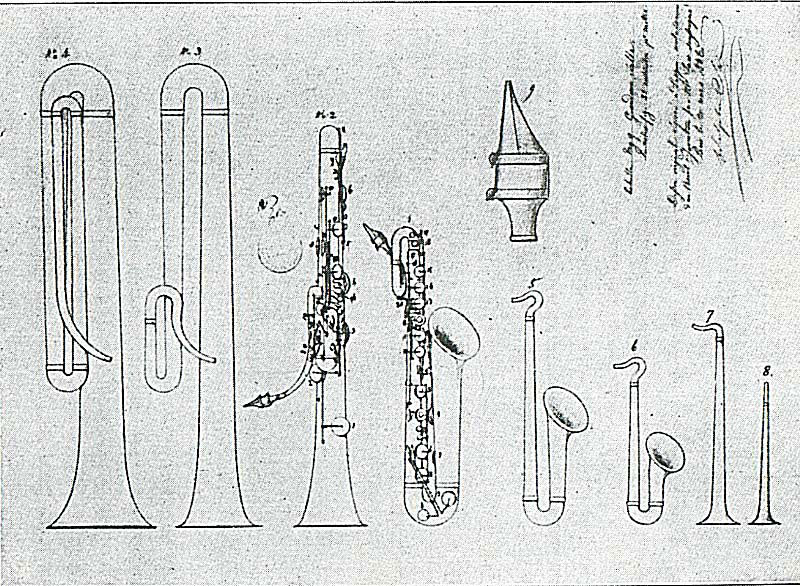No. 1. Saxophone in Eb - tenor, fundamental note: B in written pitch is D in concert pitch. (Now called baritone, usually extended to low written A. Most saxophones are keyed to low Bb, though many 19th century horns were made to low b to reduce expense and weight for marching.) No. 2. Saxophone in C - descending to Bb in its key. The same instrument can also be made in the key of Bb - it consequently descends to concert Ab which is Bb in its written key. (this is the bass saxophone- a few were made in C in the 19th century, but all modern basses are in Bb.) No. 3. Contrabass saxophone in F - it can also be made in Eb. (No contrabass in F has been built , though Kastner wrote a part for one in his Sextour of the mid 1840's) No. 4. Bourdon saxophone in C, it can also be made in Bb (one tone lower). (This subcontrabass saxophone has finally been built by Benedikt Eppelsheim of Munich. It has a smaller bore than this sketch for more air efficiency, but has a marvelous tone and is very responsive. It is a larger version of his Tubax- For details, see the description on the previous page, and visit my subcontrabass saxophone page.) The saxophones No. 5, 6, 7 and 8 are in the same keys as the preceding instruments at the octave (and fifteenth) higher. (5. is the alto, 6. is tenor, 7. is sopranino, and 8. soprano.) No. 9 is a sketch of a bass saxophone mouthpiece.
All material © Jay Easton 2001-2006 unless otherwise noted
|


